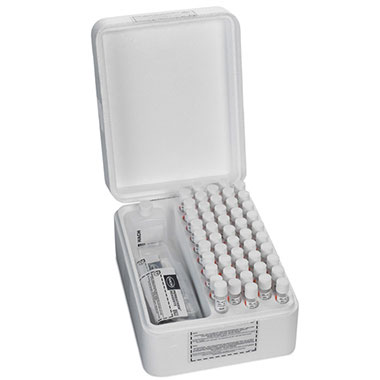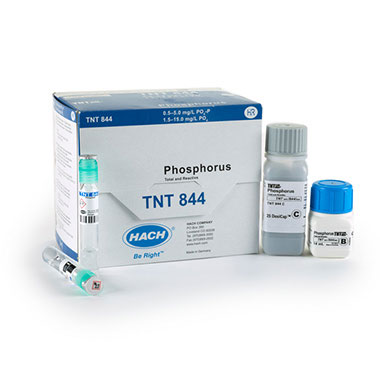-
Products
- Lab Instruments
- Lab Meters and Probes
- Chemistries, Reagents, and Standards
-
Online Analyzers
Ammonium Analysers Ammonia Monochloramine Analyzers Chlorine Analyzers
- CL17sc
- CL10sc Amperometric
- 9184 sc Amperometric
- Ultra Low Range CL17sc Colorimetric Chlorine Analyser
EZ Series Analysers- Iron
- Aluminium
- Manganese
- Phosphate
- Chloride
- Cyanide
- Fluoride
- Sulphate
- Sulphide
- Arsenic
- Chromium
- Copper
- Nickel
- Zinc
- Ammonium
- Total Nitrogen
- Total Phosphorus
- Phenol
- Volatile Fatty Acids
- Alkalinity
- ATP
- Hardness
- Toxicity
- Sample Preconditioning
- Boron
- Colour
- Nitrate
- Nitrite
- Silica
- Hydrogen Peroxide
- Sodium
- EZ Series Reagents
- Flow and Collections
-
Online Sensors and Controllers
pH & ORP Sensors
- 12mm pH/ORP
- 8362 sc High Purity
- Combination pH/ORP
- Differential pH
- Digital Differential ORP
- Digital Differential pH
- LCP ORP
- LCP pH
Conductivity Sensors- 3400 Analogue Contacting
- 3400 Digital Contacting
- 3700 Analogue Inductive
- 3700 Digital Inductive
- 9523 Cation Conductivity
- 9525 DCCP System
- Automated Lab Systems
-
Multiparameter Online Panels
Event Detection and SecurityMulti-Parameter
- Claros Water Intelligence System
- Test Kits & Strips
-
Microbiology
Prepared Media InstrumentsDehydrated Media KitsLabware
- Accessories
- Funnels, Pumps & Manifolds
- Microbiology Filters
- Petri Dishes & Accessories
- Sampling Bags
- Vials, Tubes, Bottles & Racks
-
Lab Equipment and Supply
ApparatusInstrumentsGeneral Lab Consumables Safety EquipmentBooks and Reference Material Glassware/Plasticware
- Samplers
-
Hach eLearning
Lab Product Training Process Product Training
- AN-ISE sc
- Amtax sc
- B3500
- B7000
- CL17sc
- Differential pH Sensor
- Filtrax Sample Filtration Systems
- LDO sc
- Nitratax sc
- Orbisphere 6110
- Phosphax sc
- SC1000
- SC200
- SC4500
- Solitax sc
- TU5300sc/TU5400sc
- Parameters
-
Software Solutions
-
Claros Water Intelligence System
Product Pillars Data Management
- Solutions For:
- Collection
- Visualization & Analytics
- Reporting
- Data Accuracy
Instrument Management- Solutions For:
- Maintenance
- Troubleshooting
- Remote Access
- Lab and Process Comparison
Industry ChallengesClaros News Claros Software Release Notes - Aquatic Informatics
-
Claros Water Intelligence System
- Industries
- Support
- News & Events
Hach Canada
Choose your country or region:
Europe
Americas
Asia - Australasia
- Australia
- Mainland China
- India
- Indonesia
- Japan
- Malaysia
- New Zealand
- Philippines
- Singapore
- South Korea
- Thailand (Thai)
- Taiwan
Middle East - Africa
Phosphorus
What is Phosphorus?
Phosphorus (P) is a chemical element with an atomic number of 15 and an atomic mass of 31. Due to its high reactivity, phosphorus does not naturally exist as a free element. Phosphorus generally occurs as phosphate in minerals. Phosphate is typically found in the Earth’s crust at a concentration of about 1 gram per kilogram.
The two types of elemental phosphorus are white phosphorus and red phosphorus. When exposed to oxygen, white phosphorus emits a faint glow caused by oxidation (also known as chemiluminescence).
Phosphorus belongs to the pnictogen group of elements which consists of nitrogen, phosphorus, arsenic, antimony, bismuth and ununpentium (recently assigned the name moscovium). These elements are grouped because of their similar atomic structure, which lends them the ability to form stable compounds due to their tendency to form double and triple covalent bonds. Except for nitrogen (which remains a gas), the other pnictogens are solids at room temperature.
Complex organisms such as plants and animals need phosphorus because phosphates are a component of DNA, RNA, ATP and phospholipids. Phosphorus is mined for use in detergents, pesticides, nerve agents and predominantly fertilizers.
Phosphates/Orthophosphate
In orthophosphate (one of the most common phosphates), one phosphorus atom is bonded to four oxygen atoms. Orthophosphate is sometimes called “reactive phosphorus” because it bonds easily with other electron-deficient elements and compounds since the three “extra” electrons on the oxygen atoms strongly want to bond with protons alike.
Condensed Phosphates
Condensed phosphates are multiple orthophosphate molecules “condensed” together and sharing a covalent bond between adjoining phosphorus (P) and oxygen (O) atoms. This group includes metaphosphate, pyrophosphate and polyphosphate — which are often used for corrosion control in drinking water distribution systems.
Total Phosphorus/Organic Phosphorus
Total phosphorus is a sum of all the phosphorus present: orthophosphate/phosphates, condensed phosphates and organic phosphorus. Organic phosphorus is usually present in the form of phosphates contained inside or bonded to an organic compound.
Why Measure Phosphorus?
While phosphates don’t contribute to taste and odor issues, and, therefore, may not be a target in drinking water, high phosphate levels in wastewater discharge can have a significant impact on the surrounding ecosystem. High levels of phosphates in source water can accelerate types of algae and plant growth; this can lead to eutrophication and algae blooms. When this occurs, fish and aquatic life are robbed of oxygen, resulting in large fish kills and destroyed habitats.
Measuring Phosphate in Wastewater is Critical for a Healthy Ecosystem
Measuring phosphate in wastewater effluents is critical to maintaining a healthy ecosystem and protecting wildlife. Many areas have strict discharge limits for phosphates to protect the ecosystem that receives this water. Besides protecting the ecosystem, failing to monitor and control your phosphate levels can also lead to violations and fines.
Drinking water plants that use phosphates for corrosion control may need to monitor phosphates in finished water, distribution system and other stages of the treatment process. Hach ® solutions are designed to keep you in compliance and give your operators the knowledge they need to make treatment decisions.
At Hach, find the testing equipment, resources, training and software you need to successfully monitor and manage phosphorus levels in your specific process application.
Featured Products to Measure Phosphorus
Hach's Phosphax Analyzers are designed for rugged, outdoor installations and provide easy access to reagents and serviceable parts.
Shop NowEZ Series Total Phosphorus Analysers
The EZ Series Online Analyzers offer multiple options to monitor total phosphorus in water.
Shop NowThe EZ Series Online Analyzers offer multiple options to monitor phosphate in water.
Shop NowThe 5500 sc Phosphate Analyzer requires only 2 liters of reagent for the analyzer to perform unattended for up to 90 days; twice as long as the predecessor Series 5000 instruments.
Shop NowHach is an innovator in spectrophotometry and offers many of the leading spectrophotometric instruments in the water analysis market.
Shop NowWhether you are looking for a single parameter testing device such as the DR300, or a more sophisticated hassle-free instrument like the DR900 that can measure many parameters with up to 90 methods, we have a solution.
Shop NowHach is dedicated to providing high-quality reagents for routine and challenging water analyses.
Shop Now
Which Processes Require Phosphorus Monitoring?
Drinking Water
Source water may contain elevated concentrations of phosphates due to agricultural runoff, which may cause eutrophication of surface water with algae growth and release of cyanotoxins. Condensed phosphates are often used for corrosion control in drinking water distribution systems, therefore drinking water treatment processes may require monitoring for phosphate in both raw and distributed finished water.

Wastewater Treatment
Phosphorus is an essential nutrient for plants and specifically for algae growth. The discharge of phosphorus, along with other essential nutrients in the wastewater effluent, stimulates algae growth in the streams receiving the wastewater discharge. Algae causes taste and odor problems, is aesthetically unpleasing and most importantly, creates enormous oxygen demand when algal bloom dies off. The depletion of oxygen caused by the dying algal blooms is toxic to fish and causes other significant disruptions to the aquatic environment. For these reasons, regulatory agencies often strictly regulate the amount of phosphorus allowed in wastewater discharges.
The most common methods for removing phosphorus from wastewater are biological removal and chemical precipitation. These processes are typically referred to as tertiary treatment and require phosphorus monitoring.

How is Phosphorus Monitored?

Colormetric Methods (Orthophosphate)
Orthophosphate (reactive phosphorus) is combined with molybdate in an acidic medium to produce either a blue or yellow color. Be aware that no analytical test is perfect and some condensed phosphates may be measured with these tests too. Due to the acidic chemistry, some suspended orthophosphate may be detected if the sample was not first filtered to 0.45 micron.
To measure all phosphorus including the particulate phosphates, it is necessary to use a total phosphorus test, which incorporates rigorous digestion to convert most of the particulate phosphate to dissolved format.
Benchtop/Portable:
TNT843 ULR Method 10209 (Reactive and Total)
TNT843 LR Method 10209 (Reactive and Total)
TNT844 HR Method 10209 (Reactive and Total)
TNT845 UHR Method 10210 (Reactive and Total)
TNT846 HR Molybdovanadate Method 10214 (Reactive)
Molybdovanadate TNT HR Method 8114
Reactive Phosphorus LR Chemkey (PPA)
Reactive Phosphorus HR Chemkey (PPA)
Online:
Phosphax sc LR Phosphate Analyzer

Acid Hydrolyzable Phosphate/Condensed Phosphate
To measure condensed phosphates, it is first necessary to transform them into orthophosphate using sulfuric acid and heat, digesting the sample at 150°C for 30 minutes. This is called “acid hydrolyzable phosphate” since the condensed phosphates are hydrolyzed into orthophosphate. After the digestion, either the ascorbic acid or molybdovanadate methods are used to measure the orthophosphate. Some organic phosphate will be hydrolyzed into orthophosphate as well, so the results are not “pure” condensed phosphate.
Of course, just performing the digestion and colorimetric test will tell you the concentration of both the original orthophosphate and condensed phosphates. If you want just the condensed phosphate concentration, then simply run the orthophosphate test on the same sample without a digestion and subtract those results from the first concentration value.

Total Phosphorus/Organic Phosphate
Organic phosphates are stubborn compounds that do not like to break down easily. To test for them, it is necessary to not only digest the sample first with sulfuric acid and heat, but also add a strong oxidant such as potassium persulfate to break the orthophosphates free from the organic bonds. After digestion, the same ascorbic acid or molybdovanadate methods can be used to measure the phosphate concentration. The described test will convert all the different forms of phosphate into orthophosphate, which means the results are total phosphorus.
If you want to know only the organically bound phosphate concentration, it is necessary to perform the acid hydrolyzable test and subtract those results from the total phosphorus concentration (total phosphorus concentrations will always be larger than the orthophosphate concentration).
Benchtop:
TNT843 ULR Method 10209 (Reactive and Total)
TNT843 LR Method 10209 (Reactive and Total)
TNT844 HR Method 10209 (Reactive and Total)
TNT845 UHR Method 10210 (Reactive and Total)
Total Phosphorus TNT LR Method 8190 (PhosVer 3)
Total Phosphorus TNT HR Method 10127 (Molybdovanadate)
Online:
Frequently Asked Questions
Can the Phosphax sc Analyzer be used in seawater applications?
No, the Phosphax sc cannot be used for seawater applications since this method works only up to 1000 mg/L chloride. The chloride content of seawater is typically above 19000 mg/L.
What is the difference between reactive, acid hydrolyzable and total phosphorus?
Phosphorus exists in water almost solely as phosphates, which can be dissolved, attached to particles or found in aquatic organisms (bound to organic compounds). Phosphorus levels in natural waters, such as lakes and streams, are typically very low. Elevated phosphorus levels may indicate contamination from raw or treated wastewater, agricultural discharge or industrial waste. Some drinking water plants also add small amounts of orthophosphate or condensed phosphates during post-treatment for corrosion control. Orthophosphate is the simplest form of phosphorus to measure but total phosphorus is considered the best indicator of phosphorus levels in water because it measures all forms.
Phosphates can exist in form of orthophosphate (PO 4 3-) or in larger molecules as condensed phosphates, inorganic polyphosphates or organic phosphates.
Orthophosphate is often referred to as "reactive" phosphorus because it is the only type of phosphorus that will react directly with colorimetric phosphate reagents. Orthophosphate is used by plants, bacteria and algae and is considered a limiting nutrient in water testing.
Condensed phosphates (also called meta, pyro or polyphosphates) have two or more orthophosphate groups that are linked together. They are strong complexing agents and are widely used in treatment systems for boiler water and are also found in many detergents. To measure condensed phosphates, the sample must be analyzed for acid hydrolyzable phosphorus and also orthophosphate: condensed phosphates = acid hydrolyzable phosphorus – orthophosphate.
Organic phosphates contain one or more orthophosphate groups that are attached to an organic molecule, such as sugar. They are formed primarily by biological processes and can be found in organic matter such as plant or animal tissue, in sewage from animal or human waste and food residues, as well as in pesticides. To measure organic phosphates, the sample must be analyzed for total phosphorus and for acid hydrolyzable phosphorus: organic phosphates = total phosphorus - acid hydrolyzable phosphorus.
Both condensed phosphates and organic phosphates are not as stable as orthophosphate and naturally break down into orthophosphate over time. Therefore, an orthophosphate test will likely measure a small amount of condensed phosphates and an acid-hydrolyzable test will measure a small amount of organic phosphates.
Phosphorus relationships are summarized below:
orthophosphate (o- PO 4 3-) = reactive phosphorus
Determined using Hach Methods 8048, 8178 or 8114.
Total Phosphorus (TP) = TIP + Organic PO 4 3-
= o-PO 4 3- + Poly PO 4 3- + Organic PO 4 3-
Determined using Hach Method 8190 or TNT Method 8190.
TNT+ chemistries TNT843, TNT844 and TNT845 can be used with Method 10209 for orthophosphate or Method 10210 for total phosphorus.
Total Inorganic Phosphorus (TIP/Acid Hydrolyzable) = o- PO 4 3- + Poly PO 4 3- (condensed phosphates)
Determined using Hach Method 8180 or Hach TNT Method 8180.
Organic PO 4 3- = TP-TIP
Determined by calculation only.
Condensed Phosphates (Poly PO 4 3-) = acid hydrolyzable phosphorus - orthophosphate
Determined by calculation only.
What is the difference between blue method and yellow methods for phosphates?
Reactive phosphorous can be measured colorimetrically using several different chemistries. First, the phosphorous reacts with molybdate in an acidic solution to form a phosphomolybdate complex. For low range measurements, the phosphomolybdate complex is reduced with either an amino acid or ascorbic acid, creating a characteristic molybdenum blue species. High range measurements can be made by reacting the phosphomolybdate complex with vanadium reagent to create a yellow-colored product. Color intensity of both the blue and yellow complexes are proportional to the concentration of phosphorous in the sample.
Need More Info?
Want to talk to a Hach expert about trusted, reliable Hach solutions?
Let us know - we're here to help.






